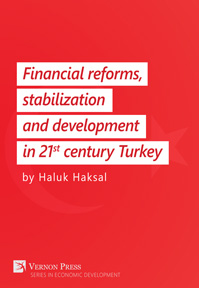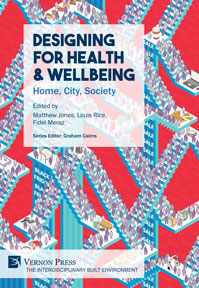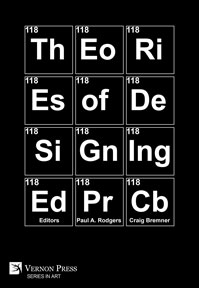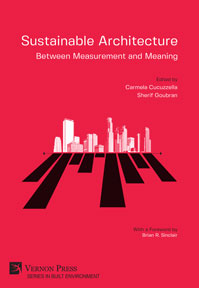Architectural Documentation: Built Environment, Modernization, and Turkish Nationalism
by Serra Akboy-Ilk (Collin College)
Purchase this book
(click here to change currency)
In language, politics, and art, meaning is as thick as a beautifully crafted roux, a fact not often appreciated regarding heritage documentation. In this insightful and carefully researched book, Dr. Akboy-İlk exposes the poetic depth of putatively simple 2 dimensional drawings of historic buildings through their employment in the creation of both the Ottoman and Turkish cultural identities. This is a “must read” for anyone interested in cultural complexities and their manifestation through cultural heritage production.
Robert Warden, AIA
Professor, Department of Architecture
Texas A&M University
Akboy-İlk’s valuable work significantly deepens our knowledge of the development of heritage conservation in Turkey. Focusing on the documents located in different archives, Akboy-İlk discovers the tendencies and approaches of heritage professionals between the period of 1923-1960. It is a clearly written and intelligently argued piece of original research, which will extremely be useful to scholars of architectural, cultural, and social history and all those concerned with the history of heritage conservation.
Prof. Dr. B. Selcen Coşkun
Faculty of Architecture
Mimar Sinan Fine Arts University, Turkey
Dr. Serra Akboy-İlk’s book provides an ambitious, critical, and sensitive window to the crucial role of architectural documentation in the nation-building of Turkey. This book is an inspiration for architects in historic preservation around the world and will contribute to the understanding of their own built heritage and the intertwined relationships between politics and culture. I was impressed by the passion and thorough account of this architectural author to weave these complex relationships in her beloved and complex country situated in global history and evolving theory of historic preservation and archival building documentation approaches.
Prof. Dr. Carolina Manrique Hoyos
College of Art and Architecture
University of Idaho
Against the backdrop of building a new country, this study explores and evaluates the documentation culture in early republican Turkey. Having fought the Turkish War of Independence (1919–22) against the Allied Powers, the revolutionaries led by legendary leader Mustafa Kemal Atatürk (1881-1938) came to engage with the idea of the West and its cultural origin. With the proclamation of the Republic of Turkey in 1923, the constitution abolished the 600-year-old Ottoman Empire including the dynastic cultural, economic, educational, and governmental institutions. In the redemption of the nation within the modern history of civilizations, cultural Westernization and technical modernization became the model for the newly found nation-state. While the new country became the subject of reformation, historic architecture was called upon to grant the aura of a glorious past to the Turks. Through the materialization of ‘Türk Tarih Tezi’ (the Turkish History Thesis), the founding leaders focused on the origin of Turks and the everlasting spirit of the Turkish state. In this pursuit, architectural heritage signified the formative power to represent the past. Supported by state-agencies, scholars, with supreme patriotic zeal and diligence, travelled across the remotest corners of the country to document and study the historic architecture of the nation.
To date, the complicated question of a national identity embodied in the built environment has dominated the contemporary scholarship on early republican historiography. Akboy-İlk’s study, however, distinguishes itself with its focus on architectural documentation, which became an agent of history-writing in the early years of the nation state. Curated by the ideologies of the state, the formal documentation findings extensively informed the republican plot of the modern progress of Turks. For scholars interested in a closer reading of the crossing boundaries between architectural heritage and nation-building in the case of the modernization of Turkey, this book is revealing and provocative in bringing forward architectural documentation, a remarkably overlooked subject in studies of the area.
List of figures
Notes on names, pronunciation, and sources
List of acronyms
Preface
Prof. Dr. Lucienne Thys-Senocak
Department of Archaeology and the History of Art Koç University, Istanbul
Acknowledgements
Chapter 1 Introduction: Documentation culture in republican Turkey
Constructing measured drawings
Documenting as an archival record
Structuring a book on architectural documentation
Chapter 2 Modern construct of architectural documentation
Rising nationalism to grant a collective past
Delineating Ottoman monuments
Surveying as the basis of physical interventions
Appraising the documentation work of Ottoman scholars
Recording an architectural legacy in the republican state
Institutionalizing documentation as a tenet of historic preservation
Compiling a scientific review of built works
Chapter 3 National cultivation of the built environment
Negotiating a binding architectural identity in the Late Ottoman Empire
Lending a voice for monuments in the Turkish History Thesis
Selecting monuments to be surveyed
Building Anatolian humanism in the aftermath of the Turkish History Thesis
Celebrating the quincentenary of the Ottoman conquest of Constantinople
Becoming the “other” monuments
Surveying Byzantine Istanbul
Turkifying Byzantine architecture
Reading the built works of the Beyliks
Compartmentalizing built heritage of the Late Ottoman Era
Chapter 4 Formal delineation of Turkish architecture
Turning to European institutions for methodical documentation
Projecting the formal order of descriptive drawings
Constructing images through drawing styles
Streamlining the processes of documentation and restoration
Illustrating the priorities of Turkish nationalism
Chapter 5 Conclusion
Bibliography
Index
Serra Akboy-İlk currently works in Collin College, Dallas, U.S., teaching design and historic preservation courses. Serra holds B.Arch. from Mimar Sinan Fine Arts University and an M.A. in Cultural Heritage Management from Koç University, Istanbul; along with a Ph.D. in architecture with a focus on historic preservation from Texas A&M University. Her research interests include drawing, architectural documentation, and historiography of Turkish art and architecture. Her recent publications center on documentation activities in the nation building project of early republican Turkey. To date, Serra has published in numerous venues, including Turkish Historical Review, Journal of Drawing Research Theory and Practice, Journal of Architectural Planning and Research, and Preservation Education and Research.
Architectural documentation, early republican Turkey, modernization, nationalism, measured drawing, formalism, national identity, historic preservation, Turkish architectural heritage, built environment, heritage conservation, historiography of Turkish art and architecture, measured survey
Subjects
Art
Sociology
History
Series
Series in Built Environment
Related services
Find in a library near you Download HQ cover Find in Bookshop.org Find this title in AmazonSee also
Bibliographic Information
Book Title
Architectural Documentation: Built Environment, Modernization, and Turkish Nationalism
ISBN
978-1-64889-565-4
Edition
1st
Number of pages
255
Physical size
236mm x 160mm

![Architectural Documentation: Built Environment, Modernization, and Turkish Nationalism [Paperback]](/file/18997/006513c979b42678d86738a4ba5587f0/1668765767.jpg)






